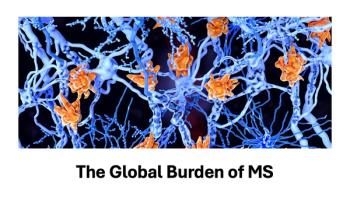
Three tools for successful risk-based pharma negotiations
Biopharmaceutical manufacturers’ at-risk day is coming. Here’s how to prepare.
The days of biopharmaceutical manufacturers and payers operating in isolation are over. Trapped in the firestorm of prior authorizations, high-deductible plans and ultra-high-cost medications are the patients who need all the help they can get to not only access, but adhere to their therapies.
O'Connor
From the head-spinning blowback on
Rather than just hammering down on drug pricing and laying out a list of programmatic demands on manufacturers, managed care executives can bring the following resources to smooth “at-risk” negotiations aligning all parties for value-based success.
Leverage or create programs that measure and improve adherence beyond MPR.
One key element manufacturers will seek in “at-risk” negotiations is programs that positively affect outcomes once the drug leaves the pharmacy. Medication possession ratio (MPR) alone is not a sufficient metric for therapy compliance. Metrics on accessibility, abandonment rates and adherence data beyond refill claims data are needed. Implementation and leveraging of programs that improve adherence, mitigate negative side effects, improve access and patient education will improve the likelihood a manufacturer will be receptive to some risk-sharing.
Related:
AbbVie, manufacturer of Humira, uses their “Humira Ambassadors” program to affect positive outcomes for disease states aligned with Humira’s indications. The program provides supplemental education including appropriate injection techniques, access assistance (including copay assistance for some patients) and other support including medication reminders.
According to an AbbVie-sponsored
It would be reasonable for MCOs and other payers to approve payment for therapies with the assurance that the patient is committed to working with similar patient-support teams and programs. Patient-care coordinators also are an example of expanded care team resources proven to improve adherence and outcomes.
The takeaway: Just because prescriptions are being filled (the key element in MPR), that does not mean patients are actually taking their medications, or taking them properly. Patients need a greater level of support including regular contact with other members of the patient-care team (pharmacists are excellent resources for this) to remain adherent to their medication regimens. This is especially important once they start feeling better, in order to avoid abandonment and improve outcomes.
Agreement on data and outcomes
HamptonIn order for manufacturers to accept some of the risk sharing, there needs to be up front agreement on outcomes being measured. It should be near clinical trial results manufacturers tout themselves: 96% to 99% cure rates (SVR 12) for patients who had no prior treatment for hepatitis C for a $94,500 12-week course of Harvoni for hepatitis C patients, for example. The most recent real-world data points to lower SVR 12 rates and higher discontinuation of therapy, however.
For HIV patients, undetectable viral loads are warranted. A
Related:
For gastrointestinal conditions such as Crohn’s disease and ulcerative colitis, elements of remission including “symptom free” or “side-effect free” are the intended outcomes that demonstrate value for associated therapies.
For Medicare patients living with multiple chronic conditions and often more than 10 prescription medications, hospital admissions or readmissions data are easily accessible, high-value outcomes metrics.
Agreement on outcomes for new therapies including PCSK9 inhibitors will be more complicated, although fewer instances of acute care including emergency department visits will almost certainly be one metric both parties, payers and manufacturers, will need to measure closely.
Who will own, and validate, the outcomes data? Framework for near-neutral third-party outcomes metrics.
Given the massive inherent biases in play, neither payers nor manufacturers can be the arbiters of the data by which “at-risk” pricing and payment agreements are adjudicated. Which data is the right data? Based on that data, at what levels will “at-risk” payments be made? And who will aggregate, assess and validate the data upon which those payment determinations will be made?
It would be the prescriber if they had the time to do so, but that is an unrealistic expectation in a world where physicians’ time per patient interaction is already as low as seven minutes.
In the world of specialty medications, the entity best suited to this task is the specialty pharmacy with validation from a clinical pharmacist.
The specialty pharmacy works in this role for several reasons, the first of which is because the pharmacy works with multiple payers. The second reason is the pharmacological expertise that resides with the pharmacist and that is critical to the side-effect mitigation that helps reduce abandonment and improve adherence. To be fair, the pharmacy is not completely neutral either. But specialty pharmacy is a competitive landscape that is becoming much more unified due to payer requirements. It can be argued that the most streamlined applicable data resides with specialty pharmacies and medication therapy management providers whose programs are proven to improve adherence and outcomes.
Related:
OptumRx and Catamaran Corp.’s, announcement that they will combine (OptumRx is UnitedHealth Group’s free-standing pharmacy care services business), as well as Anthem’s acquisition of Cigna, are strong indicators of the need for meaningful integration of multiple sources of data to measure patient outcomes in a more comprehensive manner.
Most importantly, pharmacists are in the best position to acquire data points outside of the prescriber’s office because of more candid self-reporting directly from the patient. Our pharmacists regularly discover data directly from the patients that all other members of the care team were previously unaware. The most critical of these data involve lifestyle preferences, financial hardship, additional medications, and prescribers and barriers to adherence. These barriers can be overcome through development of trusting patient relationships and a sufficient amount of direct patient interaction.
If the specialty pharmacy will be epicenter of these “at-risk” relationships, they will require payers to provide the pharmacist with claims data (not currently common) in order to assess costs. The prescribers will also need assistance and tools to more easily, readily share lab data with the pharmacist for the outcomes portion of the assessment.
Integrated delivery networks that incorporate pharmacist-led, proven medication therapy management (MTM) protocols fill an important gap in the care continuum that improves adherence and outcomes. The care-team partner with the greatest ability to influence outcomes and value in the dawn of the “at-risk” era for biopharmaceutical manufacturers and payers is the pharmacist.
About the authors:
Newsletter
Get the latest industry news, event updates, and more from Managed healthcare Executive.






















































